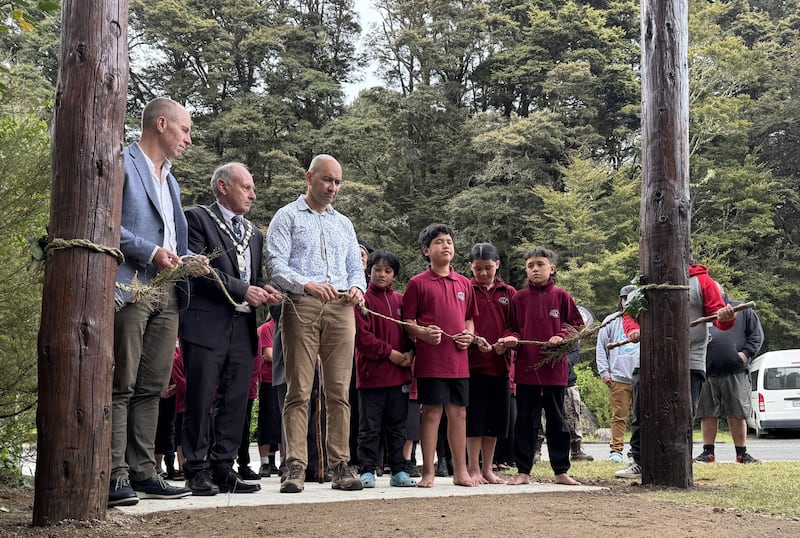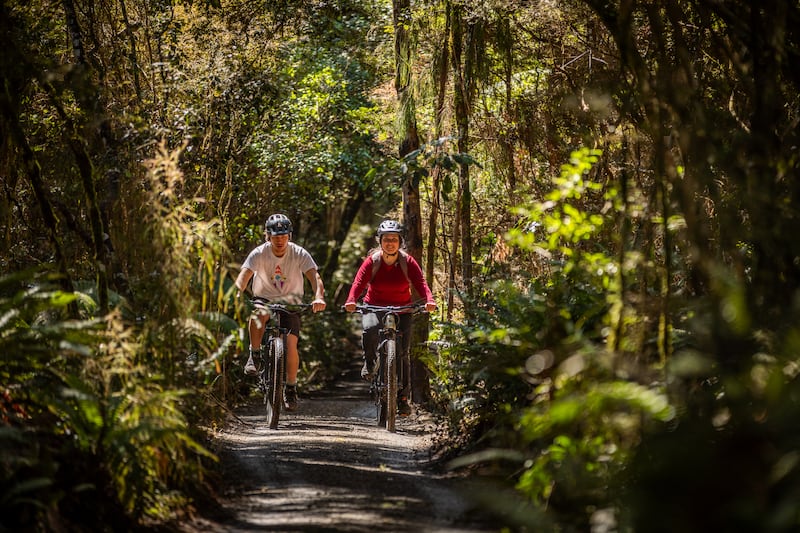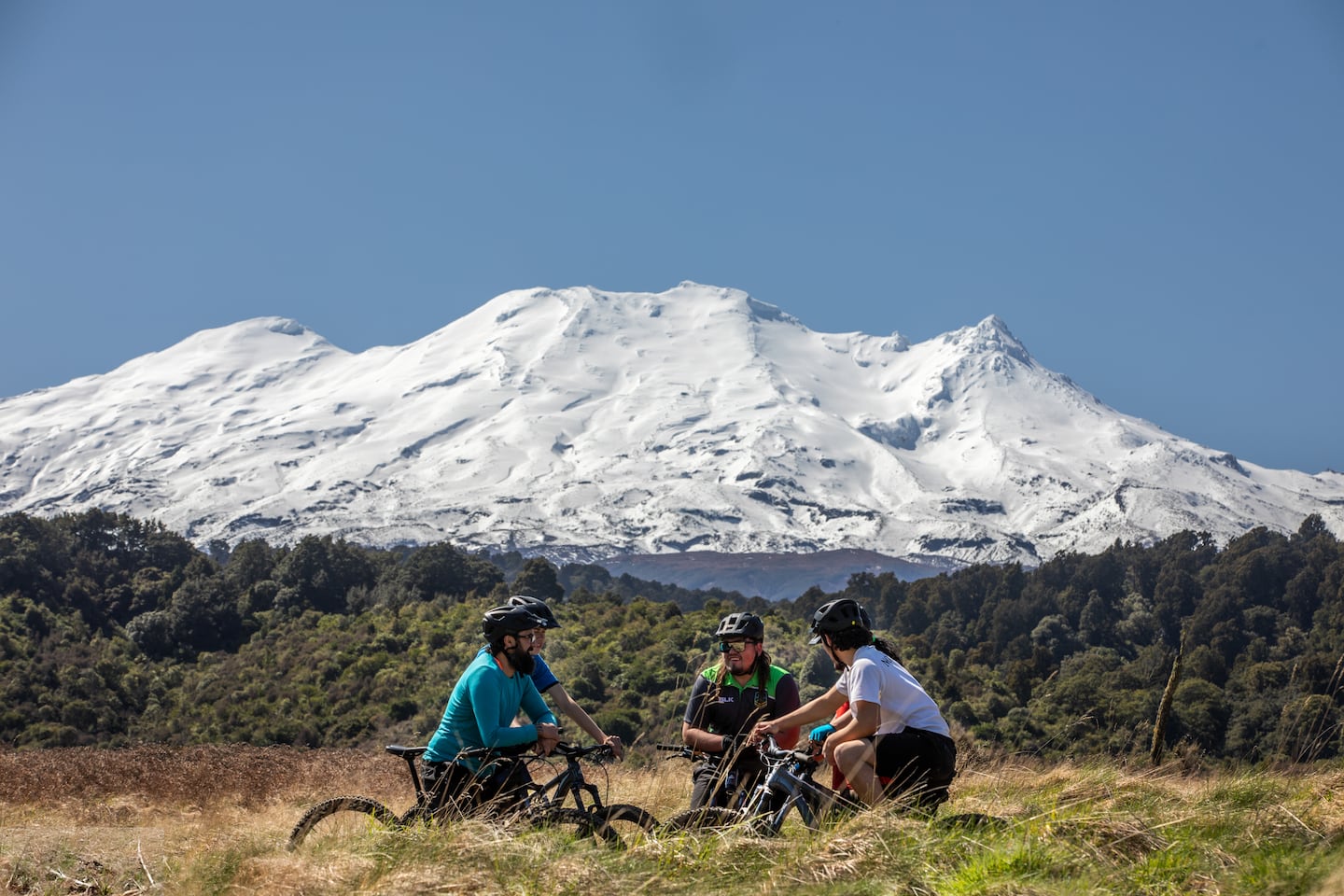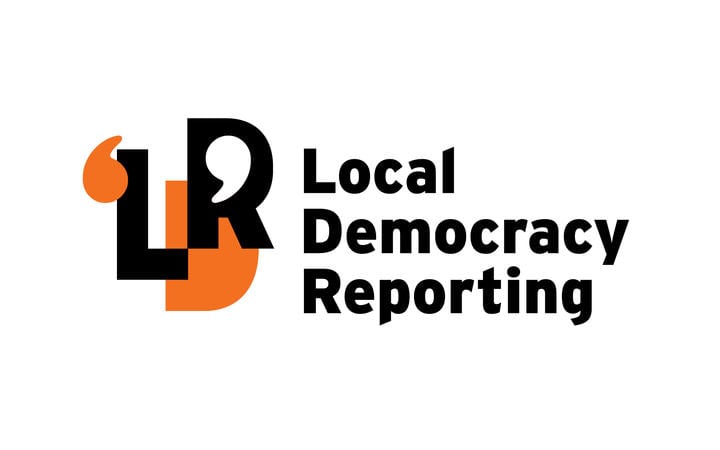The newest section of the Mountains to Sea Ngā Ara Tūhono Great Ride is “a ray of hope” for the Ruapehu district, its mayor says.
Mayor Weston Kirton said the first stage of the hiking and cycling trail Te Ara Mangawhero, on Mt Ruapehu, would help transform the district’s embattled tourism industry.
It would bring “much-needed resilience” to the local economy.
The 11.4-kilometre loop will eventually become a 21.4km section of the Great Ride, connecting the town of Ohakune to the volcanic slopes at the top of the North Island’s highest mountain.
It was opened on Friday by the locally born and raised Minister of Conservation, Māori Development, Whānau Ora and Māori Crown Relations Te Arawhiti, Tama Potaka.

Kirton said his district was facing significant economic challenges, including the recent closure of its biggest employer Winstone Pulp International, the mothballing of tourism icon Chateau Tongariro, and skifield troubles.
“We’ve had a rough time over the last 12 months. At a time like this, the opening of Te Ara Mangawhero is much needed.
“It starts a journey of resilience. It symbolises the promise of better economic times ahead.”
Year-round attractions like the Mountains to Sea trails would help drive recovery, Kirton told Local Democracy Reporting.
“They will create jobs, attract visitors all year round and provide a major economic boost at a time when we need it. Diversification is critical.
“We anticipate that when fully realised, this trail network will contribute $60 million per annum to our economy and create over 400 jobs.”
Kirton said more than 56,000 people journey each year on completed parts of the trail network.
“This is testament to the significance of what we’ve built, and the economic benefits are clear. These journeys support our communities, boost local businesses and enhance the vitality of our region.”
Kirton said he was excited to see planning underway for the next stage.
“We’re not done yet. We’re [applying] for about $30 million to complete other staged work, and that is going to be significant for this part of the world.
“As far as the economy is concerned, it’s huge. There are at least 40 or 50 businesses that could be developed out of this – accommodation, bike hire, sales and repairs, there’s a whole lot of things that we can develop off a trail like this.”
Alongside the Timber Trail, Te Ara Mangawhero would put Ruapehu on the map for adventurers.
“It’s going to be significant to have people coming to experience the landscape, the hospitality and the storytelling.”
Phase two of Te Ara Mangawhero and the 29.4km Te Hangāruru section – part of the “missing link” between National Park village and Horopito – were the next projects.
“These sections are essential to unlocking the true potential of the Mountains to Sea journey as one of New Zealand’s premier great rides,” Kirton said.
’A lasting and positive legacy’
“This is just the beginning of what will be a lasting and positive legacy for our district.”
Once completed, the Mountains to Sea ride will take cyclists and walkers through two national parks, from the top of Mt Ruapehu, along the Whanganui River to the Tasman Sea.
Stage one of Te Ara Mangawhero weaves through sub-alpine bush and along the historic Bennett and Punch bush tramway, built in the early 1900s to move timber from the native forest.

Whanganui mayor Andrew Tripe, chair of the newly established Ngā Ara Tūhono Mountains to Sea Charitable Trust, said the trail was a world-class experience, leading visitors through rich cultural and natural heritage.
The approach taken was light on the land, using previously disturbed routes.
Building on the old tramway allowed the trail to be created with minimal impact. Sustainable construction practices were used, including transplanting native seedlings back into the ngāhere.
Tripe said the trail’s economic benefits were of immediate importance to the Ruapehu district, but the network would also benefit Whanganui.
“Things aren’t that easy for us either, so the increased visitor numbers and economic spend are really important.”
Te Ara Mangawhero is a collaboration between Ngāti Rangi, the Department of Conservation and Ruapehu District Council with funding from the Regional Economic Development and Investment Unit, Kānoa, and NZ Cycle Trail Enhancement Fund.
Ngāti Rangi pou ārahi Helen Leahy said Te Ara Mangawhero is “kaitiakitanga in action”.
“Every dab, every drop, every double, every stomp provides an opportunity for connections to maunga, wai and whenua.
“It embodies the dreams of the tūpuna to connect to Koro Ruapehu, to protect his tapu and mana, and share this majestic landscape.”
Minister Potaka said the district had been through the wringer but Te Ara Mangawhero would reconnect people with intergenerational health and wellbeing.
“You can’t have wealth without health, and Te Ara Mangawhero is representative of that in many ways.”
LDR is local body journalism co-funded by RNZ and NZ On Air



